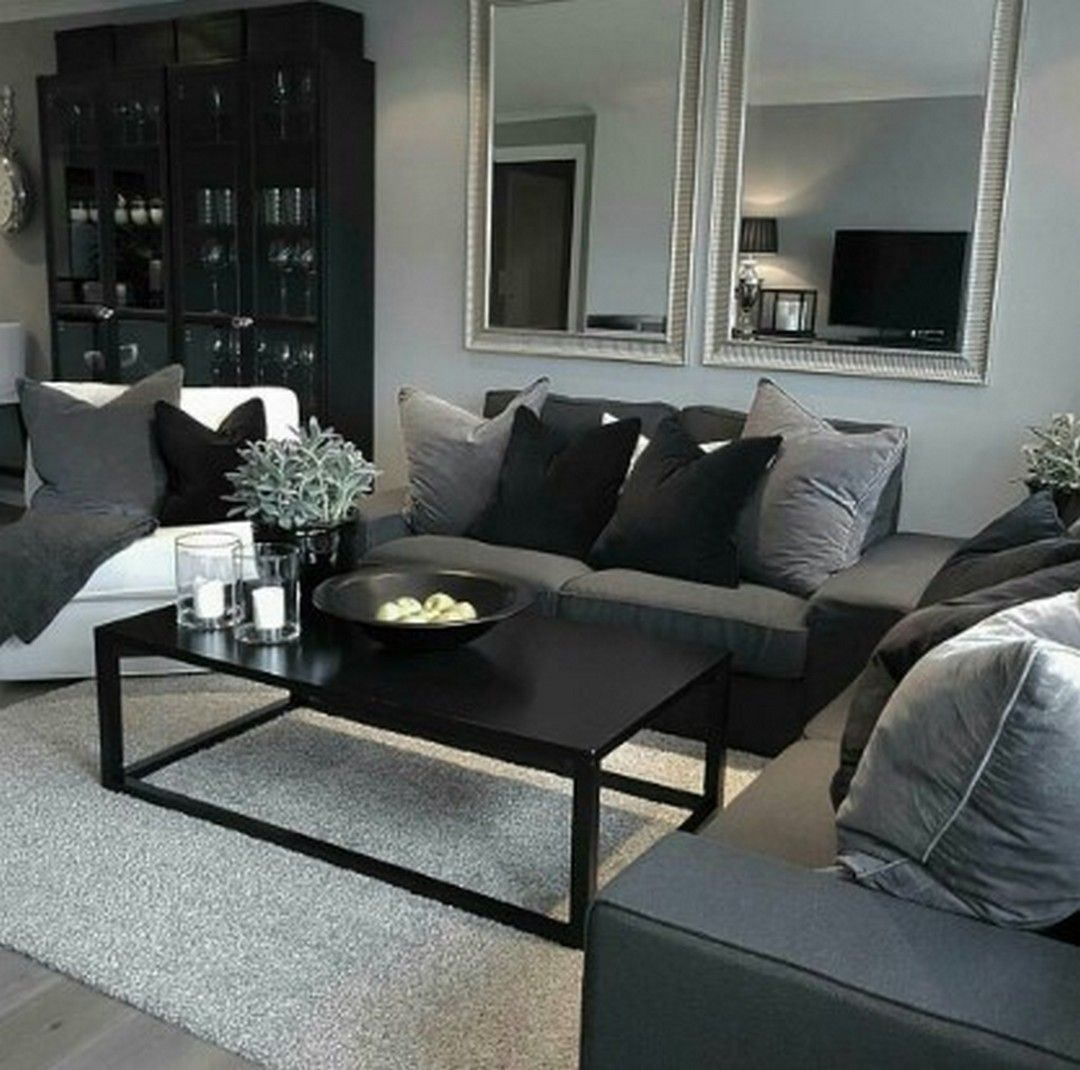Embrace the allure of a dark living room. Contrary to popular belief, dark living spaces aren’t inherently gloomy. With expert design choices, they can be warm, inviting, and full of character.
Unlocking the Allure of Dark Living Rooms
Let’s dispel the myth that dark living rooms are dull or uninviting. When thoughtfully designed, they exude a chic and intimate ambiance, transforming your space into a luxurious retreat.
Embracing Deep Hues
Don’t shy away from dark shades. Charcoal walls, for example, can look incredibly sophisticated, especially when paired with crisp white trim. This contrast adds dimension and prevents the space from feeling too heavy.
The Art of Illumination
Lighting plays a pivotal role in a dark living room. Layering different types of light is key. Consider ambient lighting for overall brightness, task lighting for specific areas like reading nooks, and accent lighting to highlight artwork or architectural details.
Mirrors, often overlooked in lighting design, can amplify both natural and artificial light, making the room feel larger and brighter. Strategically placed mirrors opposite windows or light sources can maximize this effect.
Texture: The Key to Depth
One of the most effective ways to infuse warmth and visual interest into a dark living room is through the use of texture. Natural elements like wood and stone can soften the look of dark walls, creating a sense of balance. Imagine the contrast of a sleek, dark gray wall with a reclaimed wood coffee table – a study in balance and sophistication.
Infusing Your Personal Style
The beauty of dark living rooms lies in their adaptability to diverse design aesthetics:
-
Modern Minimalism: Clean lines, minimal clutter, and a few statement pieces reign supreme in a modern minimalist dark living room. Think a charcoal gray sofa against a backdrop of dark blue walls, accented by a single, striking piece of artwork.
-
Moody & Dramatic: Rich colors, plush textures, and atmospheric lighting create a sense of drama and intimacy. Picture deep emerald walls adorned with antique mirrors, a velvet chaise lounge bathed in the warm glow of a vintage chandelier.
Beyond Aesthetics: The Psychology of Dark Colors
Emerging research suggests that dark colors can positively impact our mood and well-being. Some individuals find that dark hues evoke a sense of calm and focus, making their living room feel like a true sanctuary. This psychological aspect adds another layer to the allure of dark living spaces.
Navigating the Brightness Spectrum: Choosing the Right Vibe
Deciding between a bright and dark living room is a common dilemma. There’s no right or wrong answer; the choice depends on your personal style and the overall mood you want to create.
Bright and Airy:
Light-colored walls and ceilings, along with ample natural light, contribute to a bright and airy atmosphere. This approach often works well in smaller spaces, making them feel larger and more open.
Cozy and Dramatic:
Darker walls and soft, ambient lighting cultivate a cozy and intimate ambiance. This option is ideal for creating a sense of retreat and relaxation.
Color Theory: The Best Hues for Dark Living Rooms
The right color palette can transform a dark living room into a space that’s both stylish and inviting.
Embracing the Darkness
-
Deep Blue: A classic choice for a reason, deep blue hues add depth and sophistication. Consider navy, indigo, or even a rich teal.
-
Dark Gray: Timeless and versatile, dark gray serves as a sophisticated neutral backdrop, allowing you to experiment with pops of color in your furniture and accessories.
Brightening It Up
-
Off-White or Cream: These light and airy colors reflect light exceptionally well, making your space feel larger and more open.
-
Pale Blue with Gray Undertones: This calming color combination creates an illusion of spaciousness and airiness.
Adding Pops of Personality
Don’t be afraid to inject personality into your dark living room with pops of color:
-
Accent Wall: Paint one wall a vibrant hue like muted orange, sunshine yellow, or dusty rose to create visual interest and break up the monotony of darker tones.
-
Textiles and Decor: Introduce bold colors through throw pillows, rugs, artwork, and other decorative elements.
Factors to Consider When Choosing Colors:
-
Natural Light: A north-facing room receives less sunlight and might benefit from warmer tones, while a south-facing room, bathed in natural light, allows for greater flexibility in color choices.
-
Room Size: Light colors can make a small room feel more spacious, while darker colors can add a sense of intimacy to a larger room.
-
Existing Decor: Choose colors that complement your existing furniture and decor.
Illuminating Strategies: How to Brighten a Dark Living Room
Maximizing light is crucial in a dark living room. Here’s how to brighten things up:
Natural Light Optimization:
-
Clean Windows: It seems obvious, but clean windows can significantly increase the amount of natural light entering your space.
-
Strategic Furniture Placement: Avoid blocking windows with bulky furniture. Instead, opt for open shelving or place larger pieces against walls that don’t receive direct sunlight.
-
Mirrors: As previously mentioned, mirrors are powerful tools for reflecting light and making a room feel brighter and more spacious.
Artificial Lighting Techniques:
-
Layered Lighting: Combining ambient, task, and accent lighting creates depth and ensures adequate illumination for various activities.
-
Bulb Choice: Select bulbs with a high Color Rendering Index (CRI) for optimal light quality. Warm white bulbs create a cozy ambiance, while cool white bulbs mimic natural daylight.
Color and Decor:
-
Light-Reflecting Surfaces: Light-colored walls, flooring, and furniture reflect light, making the room feel brighter. Consider using high-gloss paint finishes for an even more dramatic effect.
-
Sheer Curtains: If privacy is a concern, opt for sheer curtains or blinds that allow natural light to filter through while still providing some coverage.
Conclusion: Embracing the Dark Side of Design
Designing a dark living room is an exercise in balance, contrast, and creativity. By carefully considering factors like lighting, color, texture, and personal style, you can create a space that is both sophisticated and inviting. Embrace the allure of the dark side and transform your living room into a haven of style and comfort.
- Memorial Stones for Gardens: A Guide to Creating a Lasting Tribute - April 29, 2025
- Melon Cut Diamonds: A Comprehensive Guide - April 29, 2025
- MarketStreet Lynnfield Stores: A Complete Directory & Shopping Guide - April 29, 2025










